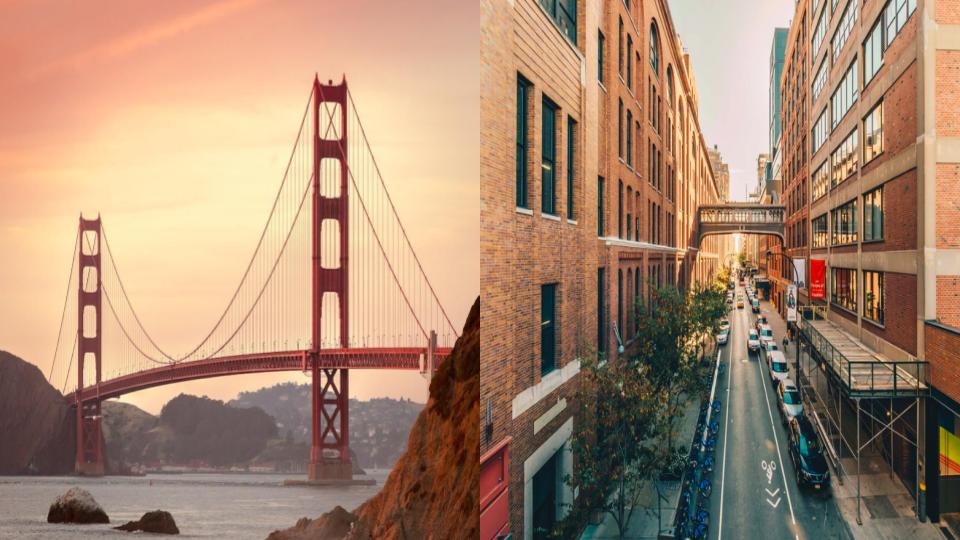Market Research in Silicon Valley and Silicon Alley

Silicon Valley and San Francisco
Silicon Valley is the home of many of the major technology companies in the United States.
Its location is Northern California, within the southern region of San Francisco. Silicon Valley innovators invented microprocessor technology, along with other vital computing technologies. These experts also built the microcomputer or PC.
Opportunities abound in the technology sector, where companies are leading in winner-take-all markets. Digital Disruption is affecting almost every industry, and Silicon Valley is at the epicenter of Digital Disruption. The Sharing Economy has also seen new apps and websites emerge in which peer to peer transactions occur. Major global ridesharing companies are based in Silicon Valley. Technology companies are increasingly creating platforms that match supply and demand, and create massive economies of scale that dominate industries.
![]()
Since the early days of computing, Silicon Valley has enjoyed explosive growth. This trend continues today. In addition to being America’s technology capital, other global technology companies have operations and R&D centers in Silicon Valley. Leasing activity is also robust in the Valley. Tenant demand has also shown a recent increase.
Tech analysts are forecasting several trends coming out of Silicon Valley soon. There will be a rise in shared, immersive experiences. Virtual and augmented reality will merge to create a new concept: mixed reality. Artificial intelligence will transform product design. Cryptocurrencies and other blockchain technologies will evolve.
Venture capitalists have stated their preference for safe, maturing investment areas. Venture capitalists are showing interest in community-based businesses, wellness, and e-sports. They have also expressed interest in Artificial Intelligence. Machine learning and healthcare delivery are other areas of interest.
Still, Silicon Valley needs to pay more attention to market research. Almost half of all defunct Silicon Valley startups go belly up because of lack of market need. Another critical mistake of many failed startups is that they misjudge the competition. Knowing about similar products can offer valuable insights into customers’ likes and dislikes. It can also give an idea of what features companies should add to products. Competitive Intelligence and Analysis can also tell businesses how much customers are willing to pay and inform ways to boost Willingness to Pay (WTP).
Silicon Valley is still far ahead of other regions when it comes to innovation. Jobs abound in the tech industry. Many residents have degrees in technical and scientific fields. Yet, one of the recent trends in the Valley is an exodus of residents, driven by high housing prices. The earlier influx of residents has reversed itself. The district recently recorded a loss of 42 residents per month.
Silicon Alley: Manhattan and Brooklyn, New York
 Some of Silicon Valley’s residents are no doubt relocating to Silicon Alley. The new tech district, Silicon Alley, is the Valley’s New York counterpart. The designation “Silicon Alley” was first used in New York in the mid-90s. New Yorkers wanted to group the technology startups found in Manhattan’s Flatiron District. The media credits recruiter Jason Denmark with coming up with the name. At the time, he was attempting to attract developers from California to New York.
Some of Silicon Valley’s residents are no doubt relocating to Silicon Alley. The new tech district, Silicon Alley, is the Valley’s New York counterpart. The designation “Silicon Alley” was first used in New York in the mid-90s. New Yorkers wanted to group the technology startups found in Manhattan’s Flatiron District. The media credits recruiter Jason Denmark with coming up with the name. At the time, he was attempting to attract developers from California to New York.
Silicon Alley has expanded. It first spread into the TriBeCa neighborhood. It now encompasses the entire city, with growing tech startups in every borough. Brooklyn is attracting more CreativeTech and UrbanTech companies. Biotechnology and FoodTech are popping up in Queens. Social good enterprises are setting up in the Bronx and Harlem.
This spread signifies the growth and maturity of the tech industry in New York. There is growing support for tech. New campaigns like “Made in New York” promote New York as a startup center and promote the brand of New York. There is also no shortage of workspaces, incubators, accelerators, events, business groups, and government initiatives.
New York’s startup scene benefits from robust sectors of other industries. Core NYC industries include Financial services, Healthcare, Retail, Media, Entertainment and Fashion. Silicon Alley has opportunities and challenges to position itself to serve these industries.
As with any tech district, Silicon Alley has some startups to watch. One example is Knotel, a network of managed customizable workspaces. Another example is Teachable. The Teachable platform allows instructors to create and share courses. There’s also Call9, which reduces the number of unnecessary trips to the hospital. Call9 supplies emergency care to the bedsides of nursing home patients.
The emergence of large tech companies on the scale of Apple and Facebook is likely in Silicon Alley. Google made billion dollar property investments in the Chelsea district NYC. An excellent infrastructure now exists to support tech industries. This infrastructure came about despite a gradual slowdown in investment activity. Silicon Alley may soon rival Silicon Valley. As a result, New York City will become a formidable tech hub powered by its momentum.
About Market Research in Silicon Valley and Silicon Alley
SIS has over 40+ years in conducting market research and strategy consulting for technology companies. With offices, databases and field teams on-the-ground in New York City and San Francisco, SIS is well positioned to be your competitive edge in today’s fast-paced global economy.

